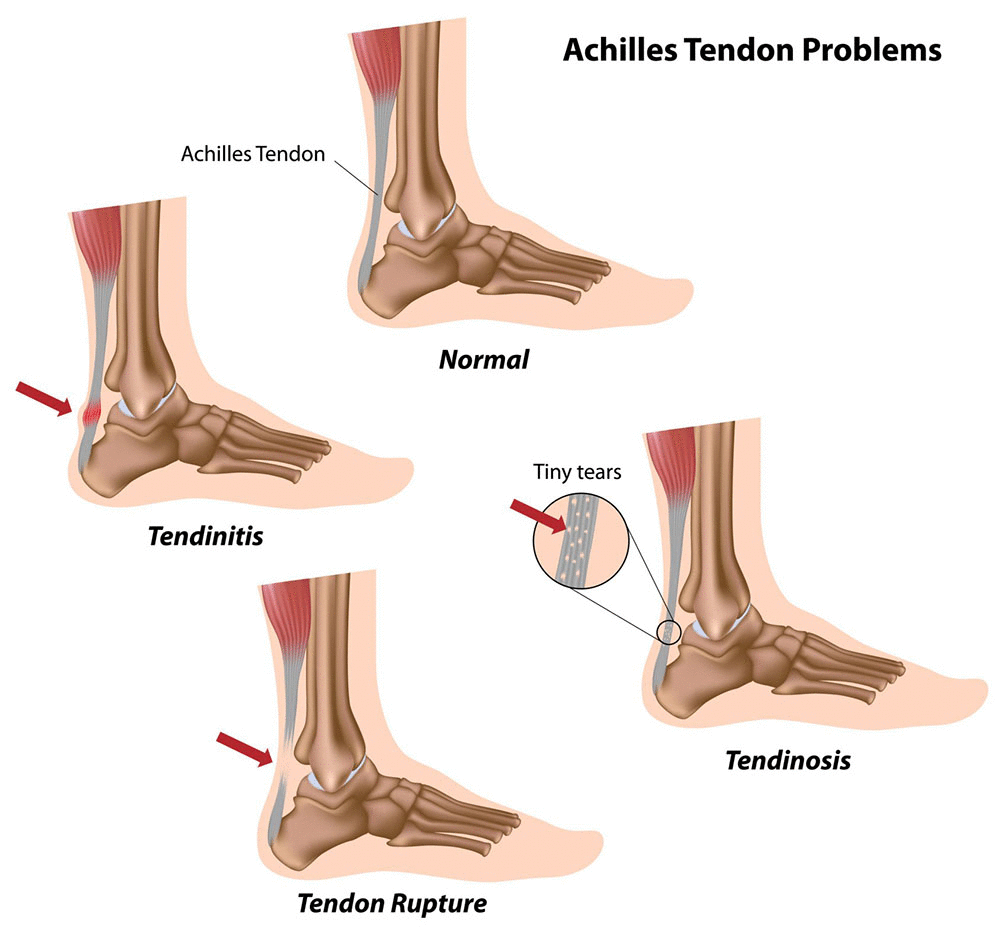Achilles tendon problems are often the result of repetitive stress or sudden strain. Some common causes include:

The severity of symptoms depends on whether the injury is mild tendinitis, tendinosis, or a rupture. Common signs include:
Most Achilles tendon injuries respond well to non-surgical management, especially if diagnosed early.
Surgery is typically reserved for severe cases or complete ruptures when conservative management fails.
Achilles tendon injuries can significantly impact mobility and quality of life. Fortunately, most cases respond well to conservative treatment when caught early. For severe injuries, surgical repair provides good outcomes with proper rehabilitation. If you suspect an Achilles tendon injury, consult a healthcare professional promptly for diagnosis and a tailored treatment plan.
The Achilles tendon—the largest tendon in the human body—connects the calf muscles to the heel bone. It plays a vital role in walking, running, and jumping. Unfortunately, it is also one of the most commonly injured tendons. Achilles tendon injuries can range from mild inflammation to complete ruptures, often leading to significant pain and mobility issues. Understanding the causes, symptoms, and treatment options is essential for effective recovery.
Achilles tendon problems are often the result of repetitive stress or sudden strain. Some common causes include:

The severity of symptoms depends on whether the injury is mild tendinitis, tendinosis, or a rupture. Common signs include:
Most Achilles tendon injuries respond well to non-surgical management, especially if diagnosed early.
Surgery is typically reserved for severe cases or complete ruptures when conservative management fails.
Achilles tendon injuries can significantly impact mobility and quality of life. Fortunately, most cases respond well to conservative treatment when caught early. For severe injuries, surgical repair provides good outcomes with proper rehabilitation. If you suspect an Achilles tendon injury, consult a healthcare professional promptly for diagnosis and a tailored treatment plan.